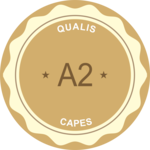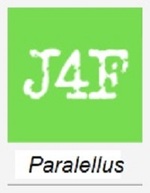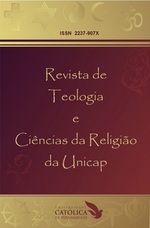ABOUT CAMELS AND NEEDLES: NOTES ON THE HISTORY OF A SAYING ATTRIBUTED TO JESUS
DOI:
https://doi.org/10.25247/paralellus.2021.v12n30.p449-467Keywords:
história da interpretação, literatura evangélica, textos patrísticos, CorãoAbstract
The article brings up a saying attributed to Jesus, which makes use of the image of a camel in relation to the bottom of a needle to affirm the practical impossibility of a rich person entering the kingdom of God. It discusses the reactions that it provoked, from its insertion in narratives that associated it with a specific situation to hermeneutical movements that gave it other meanings, tried to soften its impact or rewrote it with another framework. To this end, accounts present in the New Testament, literature related to the so-called "Church Fathers" and a passage found today in the Muslim Qur’ān are commented on. This shows the discomfort of the image and the saying transmitted as being of Jesus in generations that have suffered its impact. The proposed route sheds light on an issue that is always sensitive when thinking about relations between religions and societies: that of wealth, its possession and enjoyment.
Downloads
References
ADRIANO FILHO, José. “O pobre e o rico em Tiago e no Pastor de Hermas”. In: Revista de Interpretação Bíblica Latino-Americana. Petrópolis/São Leopoldo, 1998. n.31, pp. 143-157.
BAILEY, Kenneth. As parábolas de Lucas. 3 ed., São Paulo: Vida Nova, 1995.
BAZZANA, Giovanni B. “From Thesauroi to Purses: Wealth and Poverty between Q and Luke”. In: VERHEYDEN, Joseph and KLOPPENBORG, John S. Luke on Jesus, Paul and Christianity: What did he really know? Leuven: Peeters, 2019, pp. 193-217.
BERGER, Klaus. As formas literárias do Novo Testamento. Tradução de Fredericus Antonius Stein. São Paulo: Loyola, 1998.
BROWN, Peter. Through the eye of a Needle: Wealth, the Fall of Rome, and the Making of Christianity in the West, 350-550 AC. Princeton/Oxford: Princeton University, 2012.
BRUNI, Luigino. “O buraco da agulha tornou-se grande” (25/01/2020). In: https://www.luiginobruni.it/br/ok-ok/o-buraco-da-agulha-tornou-se-grande.html
(acesso em 19/05/2021)
COMBLIN, José. Atos dos apóstolos: vol. I: 1-12. Petrópolis: Vozes/Imprensa Metodista/Sinodal, 1988.
CROSSAN, John Dominic. O Jesus histórico: a vida de um camponês judeu do Mediterrâneo. Tradução de André Cardoso. Rio de Janeiro: Imago, 1994.
D’ALEXANDRIE, Clément. Quel riche sera sauve? Paris: Cerf, 2011 (volume preparado por Carlo Nardi e Patrick Descortieux).
EDWARDS, James R. “The Hebrew Gospel in Early Christianity”. In: MCDONALD, Lee Martin and CHARLESWORTH, James H. (org.) “Non-canonical” Religious Texts in Early Judaism and Early Christianity. London/New York: T&T Clark, 2012, pp. 116-152.
FITZMYER, Joseph A. El evangelio según Lucas IV. Tradução de Dionisio Míguez. Madrid: Cristiandad, 2005.
GALADARI, Abdulla. “The Camel Passing through the Eye of the Needle: a Qur’anic Interpretation of the Gospels”. In: Ancient Near Eastern Studies. Leuven, 2018. n. 55, pp. 77-89.
GONZÁLEZ FERRÍN, Emilio. A angústia de Abraão: as origens culturais do judaísmo, do cristianismo e do islamismo. Tradução de Pedro Lima Vasconcellos. São Paulo: Paulus, 2018.
HOEK, Annewies van den. “Widening the Eye of the Needle”. In: HOLMAN, Susan R. (org.) Wealth and Poverty in Early Christian Church and Society. Grand Rapids: Baker, 2008, pp. 67-75.
HOORNAERT, Eduardo. A memória do povo cristão. Petrópolis: Vozes, 1986.
HOORNAERT, Eduardo. Hermas no topo do mundo: leitura de um texto cristão do século II. São Paulo: Paulus, 2002.
HORSLEY, Richard A. Jesus e a espiral da violência: resistência judaica popular na Palestina romana. Tradução de Monika Ottermann. São Paulo: Paulus, 2010.
HORSLEY, Richard A. Jesus and the Politics of Roman Palestine. Columbia: University of South Carolina, 2014.
KELBER, Werner H. The Kingdom in Mark: a New Place and a New Time. Philadelphia: Fortress, 1974.
LUXENBERG, Christoph. The Syro-Aramaic Reading of the Koran: a Contribution to the Decoding the Language of the Koran. Berlin: Verlag Hans Schiler, 2007.
MALINA, Bruce e ROHRBRAUGH, Richard L. Los evangelios sinópticos y la cultura mediterránea del siglo I. Tradução de Victor Morla Asencio. Estella: Verbo Divino, 2002.
MILLER, Robert [ed.] The Complete Gospels. San Francisco: HarperCollins, 1994.
MYERS, Ched. O evangelho de são Marcos. Tradução de I. F. L. Ferreira. São Paulo: Paulus, 1992.
NARDI, Carlo. “Introduction”. In: D’ALEXANDRIE, Clément. Quel riche sera sauve? Paris: Cerf, 2011, pp. 9-71 (volume preparado por Carlo Nardi e Patrick Descortieux).
OLIVEIRA, Itamar Freitas de. “No rastro de Conselheiro”. In: http://www.infonet.com.br/ canudos/roteiro.htm (09/03/03).
OMANSON, Roger L. Variantes textuais do Novo Testamento: análise e avaliação do aparato crítico de “O Novo Testamento Grego”. Tradução de Vilson Scholz. Barueri: Sociedade Bíblica do Brasil, 2010.
Pastor de Hermas. In: Padres apostólicos. São Paulo: Paulus, 1995, pp. 159-274.
PESCH, Rudolf. Il vangelo di Marco: parte seconda. Tradução de Marcello Sofritti. Brescia: Paideia, 1982.
REYNOLDS, Gabriel S. “Biblical Turns of Phrase in the Quran”. In: ELIAS, Jamal J. and ORFALI, Bilal (ed.) Light upon Light: a Festschrift Presented to Gerhard Böwering by his Students. Leiden: Brill, 2019, pp. 45-69.
RIPPIN, Andrew. “Qur’ān 7,40: ‘Until the Camel passes through the Eye of the Needle’”. In: Arabica. Leiden, 1980. n. 27, pp. 107-113.
STEGEMANN, Ekkehard W. e STEGEMANN, Wolfgang. Historia social del cristianismo primitivo. Los inicios em el judaísmo y las comunidades cristianas em el mundo mediterráneo. Tradução de Miguel Montes. Estella: Verbo Divino, 2011.
THEISSEN, Gerd. La religión de los primeiros cristianos. Tradução de Manuel Olasagasti Gaztelumendi. Salamanca: Sígueme, 2002.
VASCONCELLOS, Pedro Lima. “De trajetórias que fizeram uma sura do Corão a repensar as origens do islã”. In: Araucaria. Revista Iberoamericana de Filosofía, Humanidades y Relaciones Internacionales. Sevilla, 2019. n. 41, pp. 378-391.
Downloads
Published
Issue
Section
License
Copyright (c) 2021 Pedro Lima Vasconcellos

This work is licensed under a Creative Commons Attribution 4.0 International License.
A submissão de originais para a Paralellus implica a transferência, pelos autores, dos direitos de publicação eletrônica. Os direitos autorais para os artigos veiculados neste periódico são do autor; todavia, são da revista os direitos sobre a primeira publicação. Os autores somente poderão fazer uso dos mesmos resultados em outras publicações se indicarem, claramente, que a Paralellus foi o meio originalmente utilizado. Em decorrência do fato de ser a Paralellus uma revista de acesso público, é permitida a utilização gratuita dos artigos em aplicações educacionais e/ou científicas não comerciais, desde que respeitando-se a exigência de citação da fonte (Texto atualizado em 16-11-2020).

















